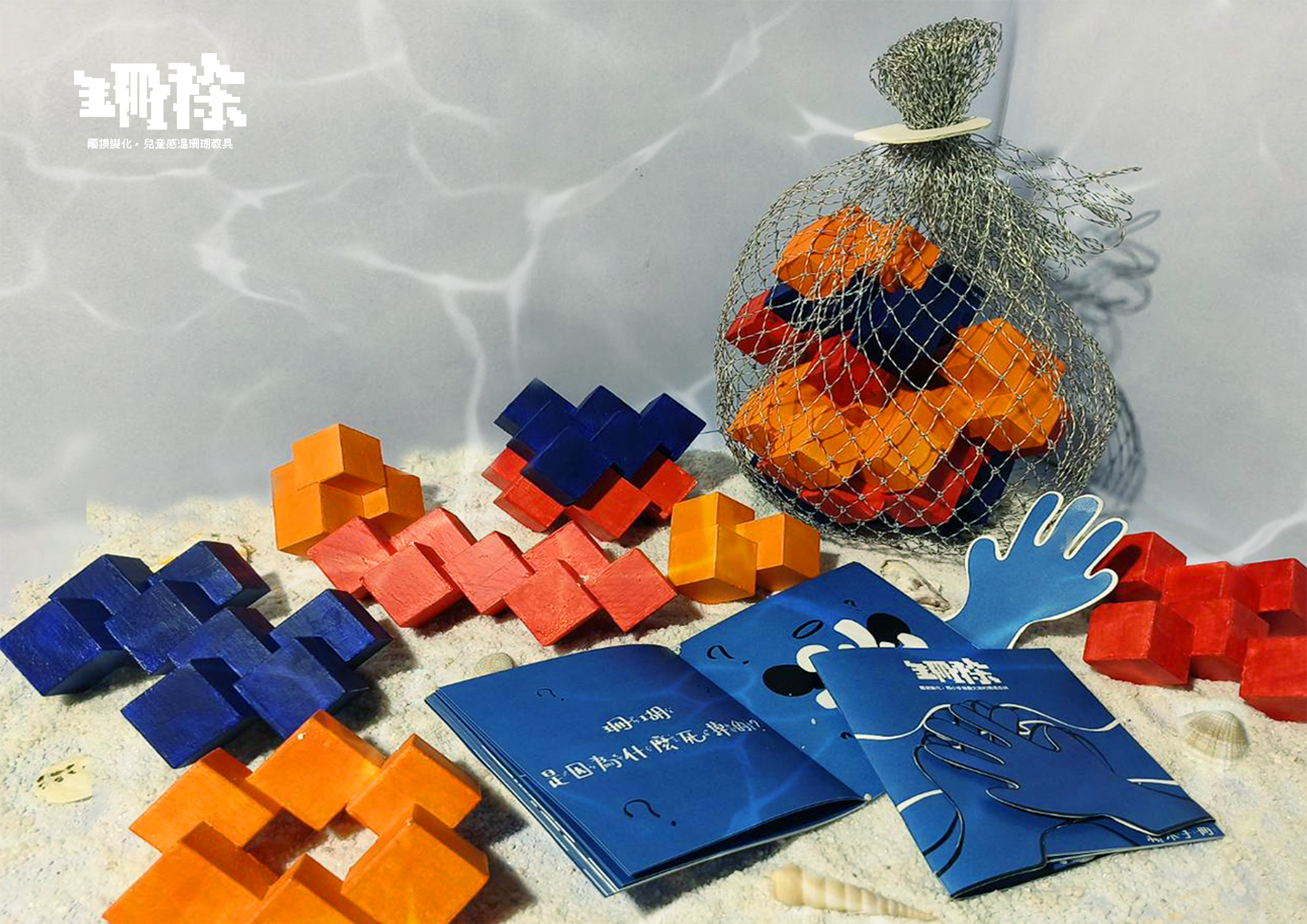
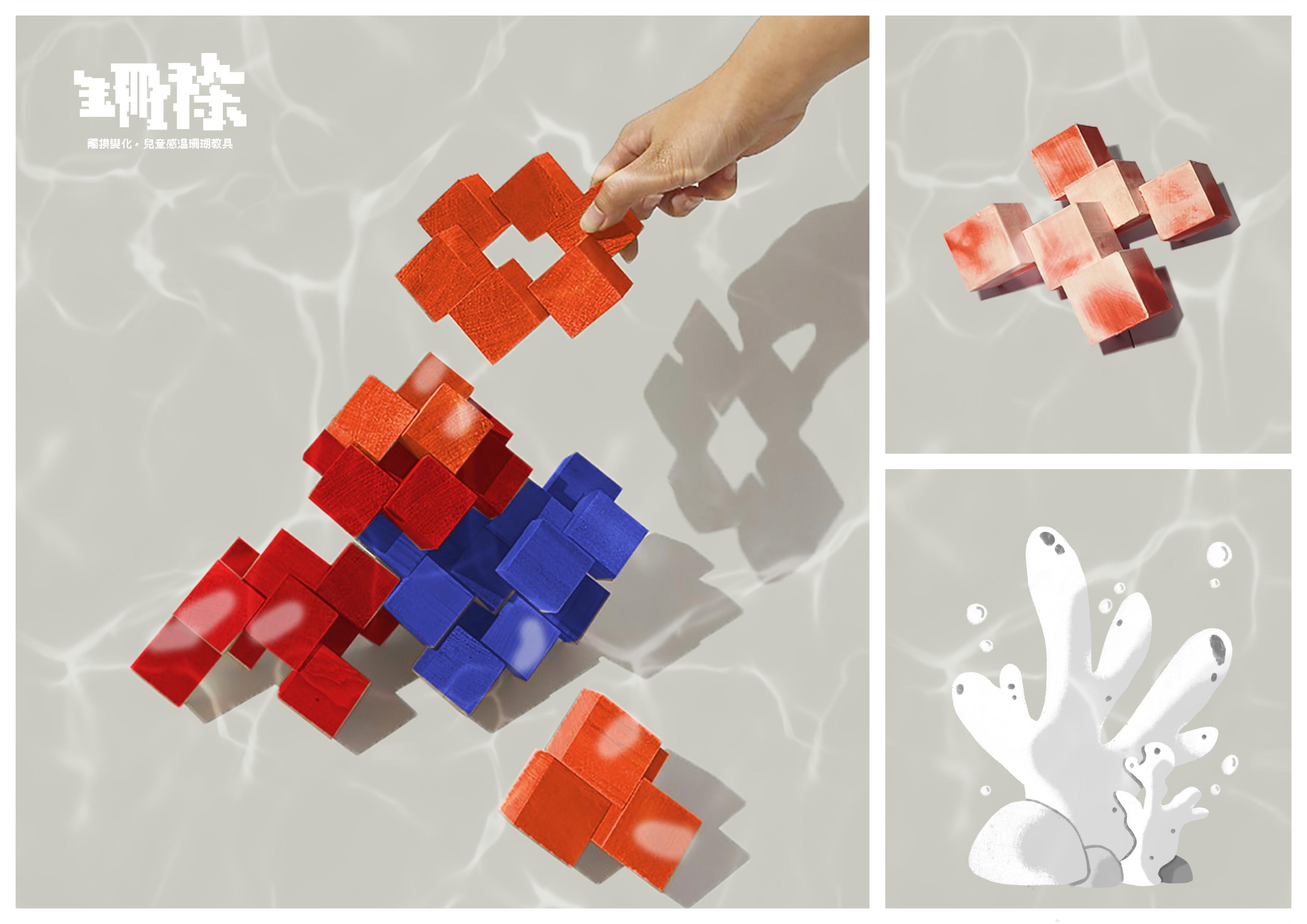
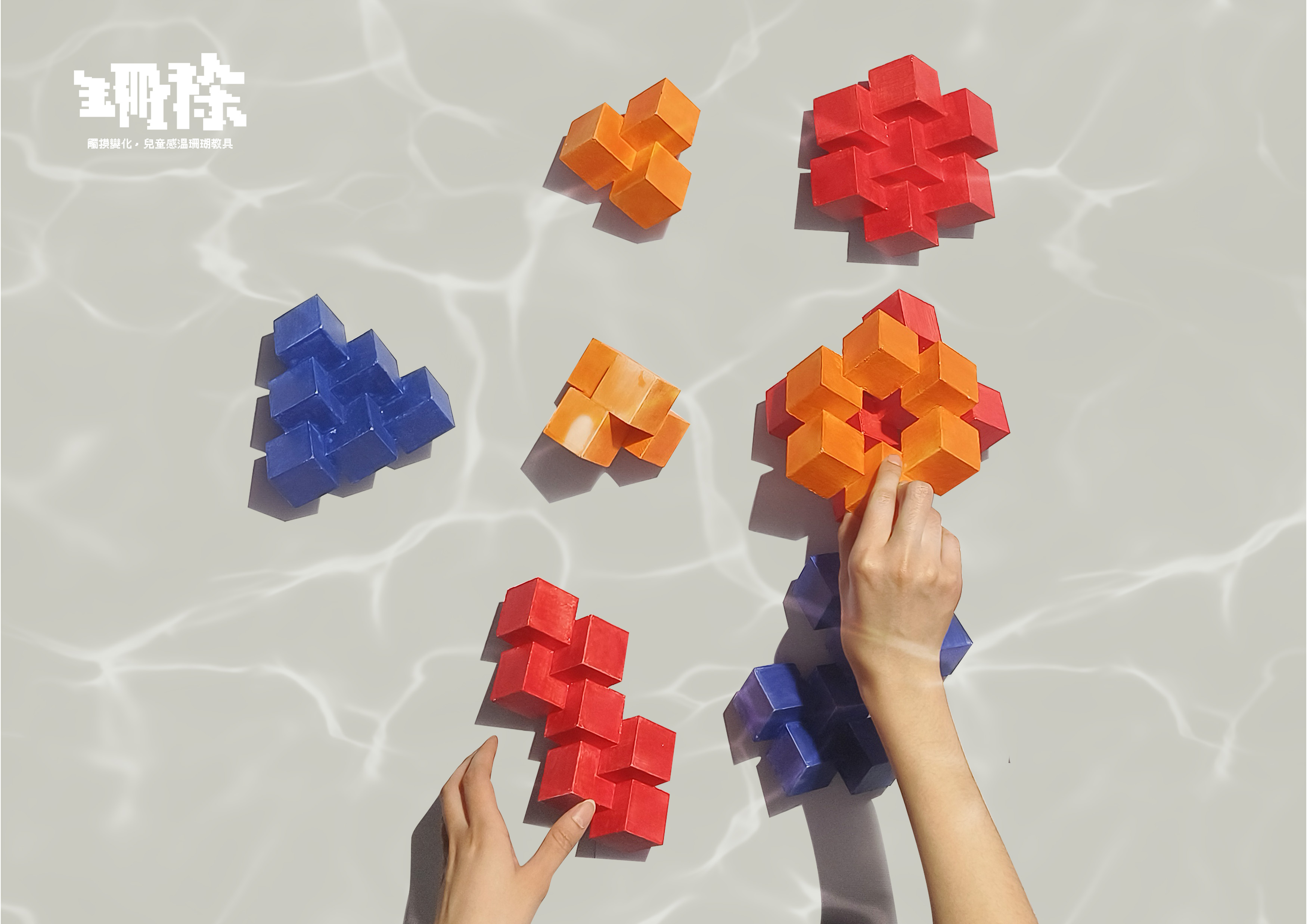
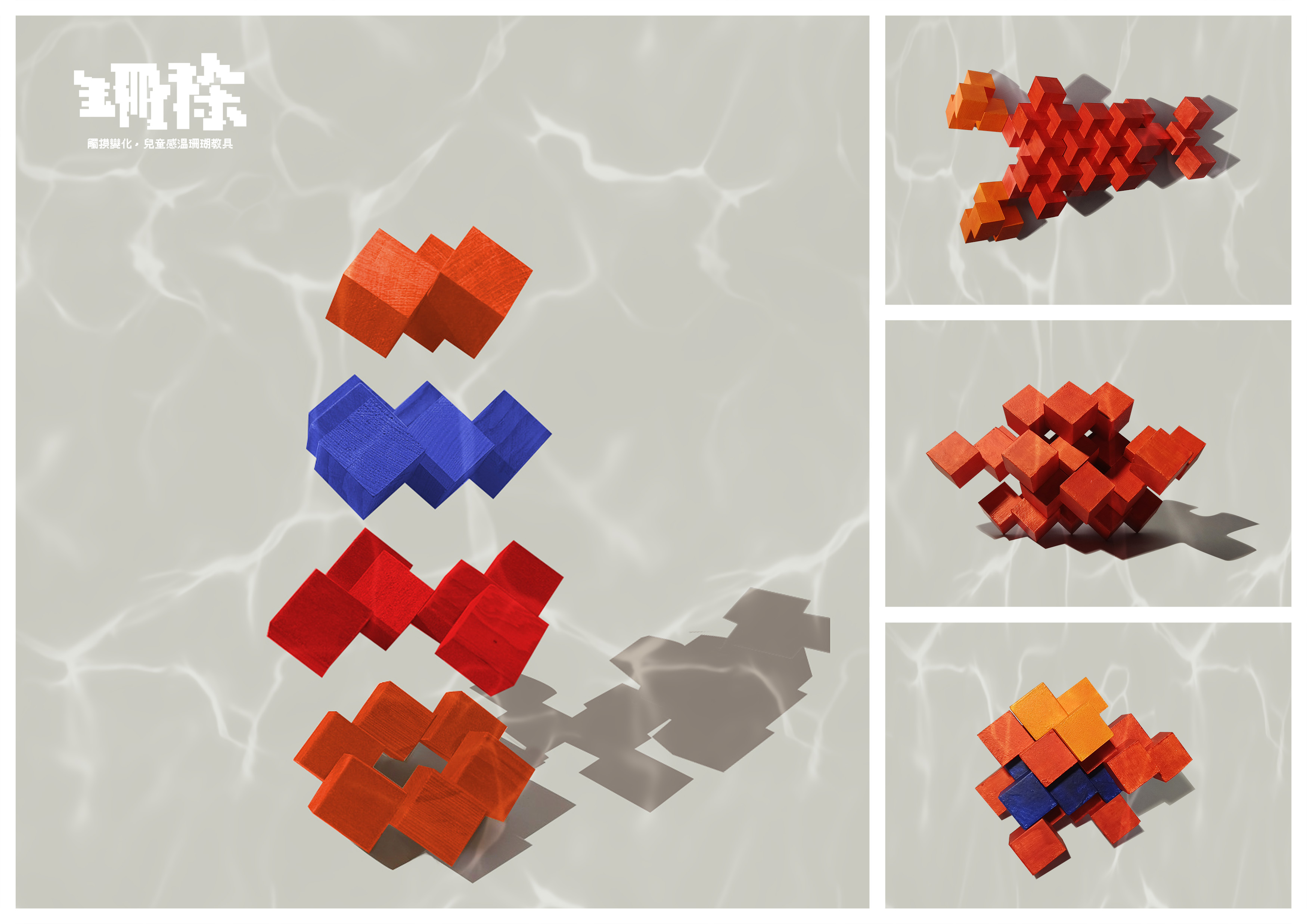
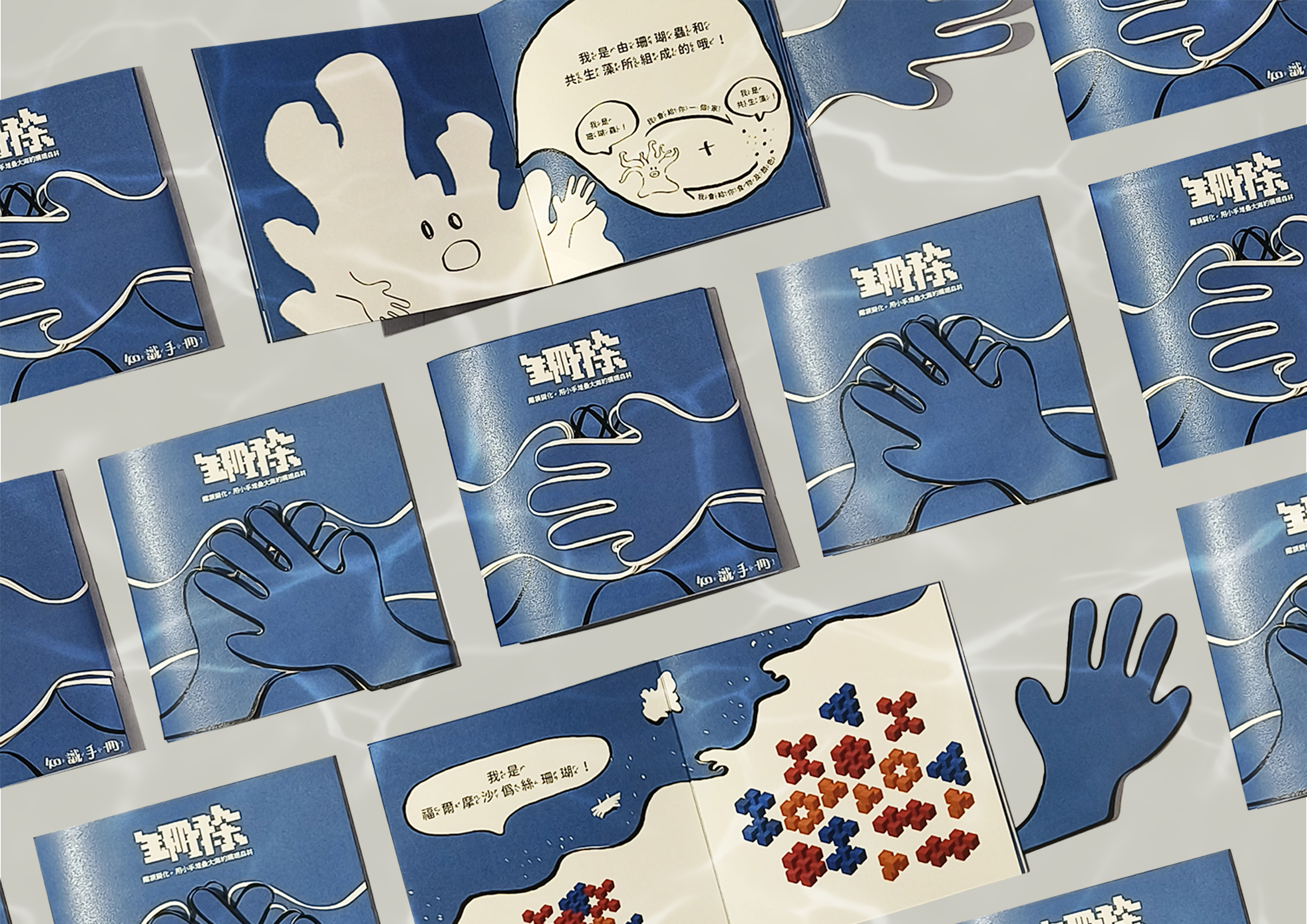
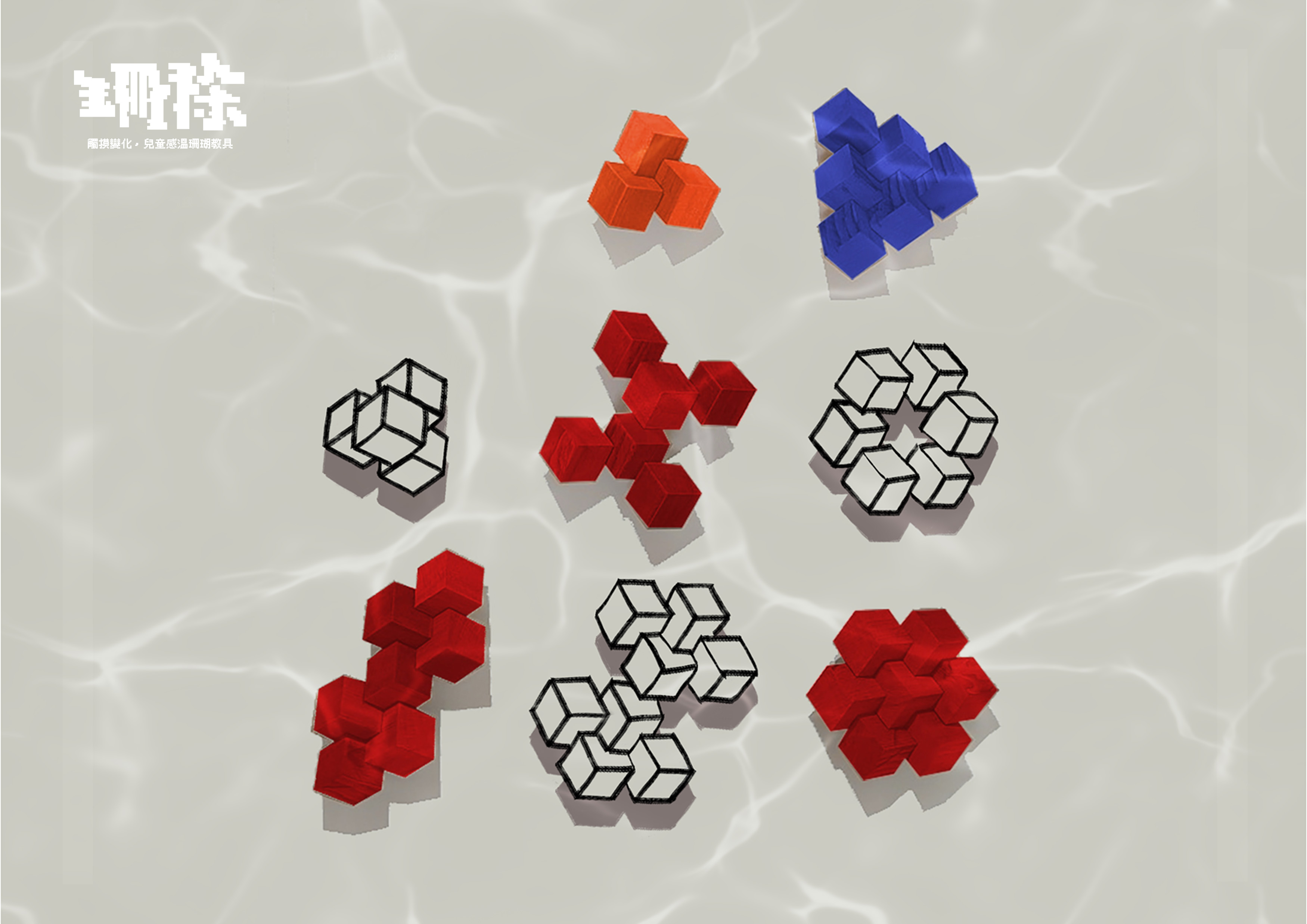
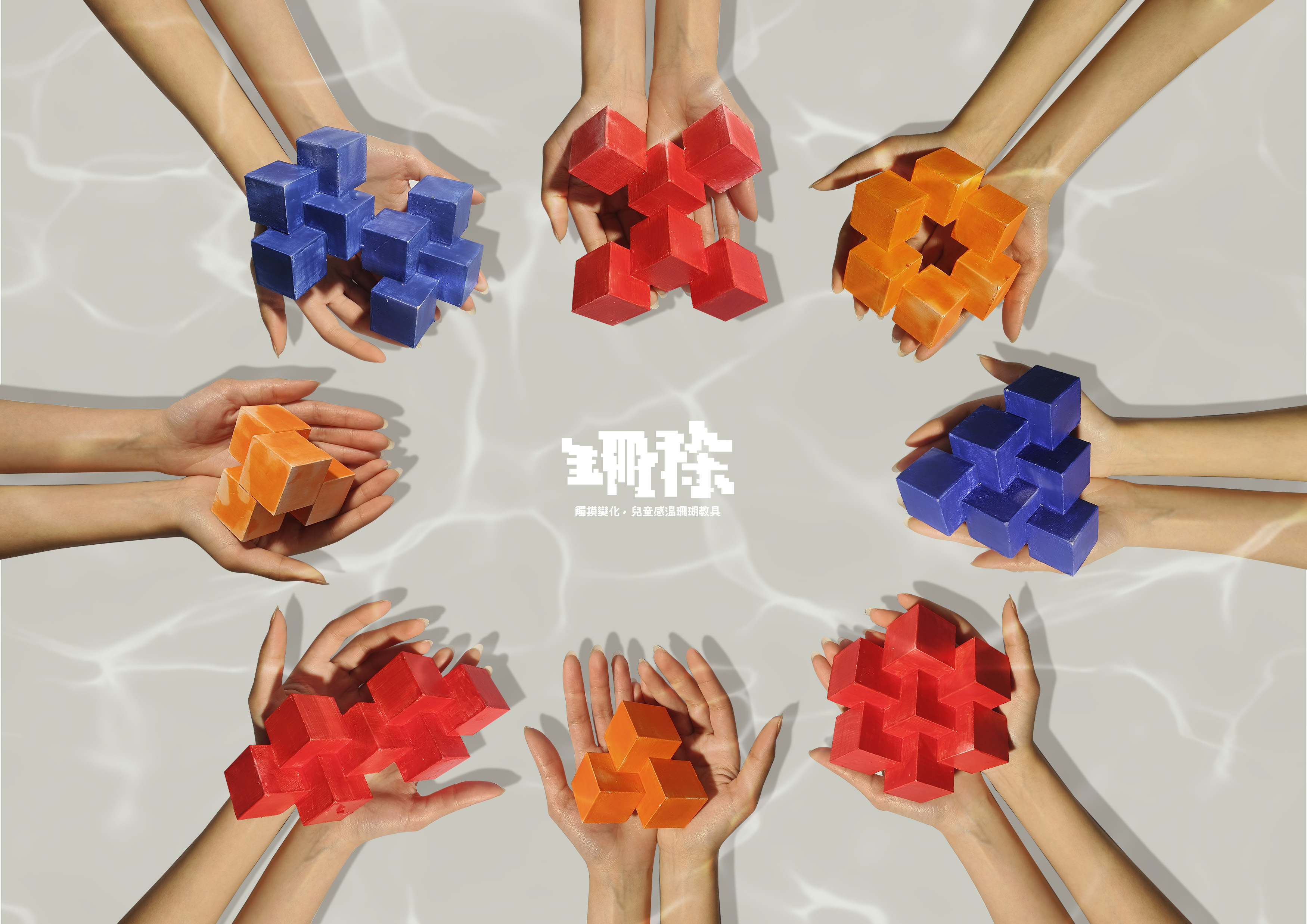
「觸摸變化,兒童感溫珊瑚教具」,用小手守護大海的珊瑚森林,使用教具讓兒童直觀的感受珊瑚白化,教具色彩可恢復鮮豔,但珊瑚卻不行,了解白化的不可逆性,在玩樂中學習人為迫害及環境因素對珊瑚健康的影響,認識珊瑚保育的重要性。
以SDGs中「永續海洋與保育」為核心,設計一款提供4-9歲兒童使用的互動式感溫教具,通過視覺和觸覺的雙重互動,訓練手部肌肉、專注力、手眼協調、創造力等,讓孩子們在玩樂中學習。
包裝選用與水波紋相似的廢棄漁網進行設計,教具堆疊形成珊瑚,當教具為彩色時象徵珊瑚被海水包圍,感溫變白時則是珊瑚被海廢包圍的意象,傳達人為丟棄的海廢對珊瑚的傷害。
將漂流木進行挑選、打磨及切割組裝成八種消波塊堆,堆疊形成珊瑚與動物組合的樣貌,傳達珊瑚可透過消波塊進行繁衍的關係,每次堆疊時形成的樣貌皆不同,象徵珊瑚型態的多樣性。使用感溫油墨,因油墨變色與珊瑚生存都需要適當的溫度,當小朋友使用手堆疊教具時,會因手溫使其變白,呼應人類行為對環境的影響。並配合兩本手冊知識與玩法說明,科普有哪些行為會傷害到牠,讓兒童認識人為迫害及環境因素對珊瑚健康的影響,了解珊瑚保育的重要性。
"Touch and Change:Children's Temperature-Sensitive Coral Educational Tool." ,using small hands to protect the coral forests of the ocean! This educational tool allows children to experience coral bleaching intuitively. The vibrant colors of the tool can be restored, but real corals cannot—helping kids understand the irreversible nature of bleaching. Through play, they learn about the impact of human activities and environmental factors on coral health and recognize the importance of coral conservation.
Designed with the Sustainable Development Goal (SDG) of 'Life Below Water' in mind, this interactive temperature-sensitive tool is tailored for children aged 4 to 9. It engages both visual and tactile senses, helping develop fine motor skills, focus, hand-eye coordination, and creativity while making learning fun.
The packaging is crafted from discarded fishing nets, resembling ocean waves. The stacking of the tool forms a coral shape—when colorful, it symbolizes corals surrounded by seawater; when turning white due to temperature sensitivity, it represents corals being surrounded by marine waste. This conveys the damage caused by human-discarded ocean waste.
Driftwood is carefully selected, polished, cut, and assembled into eight types of wave-dissipating blocks, which can be stacked to form coral and marine animal shapes. This represents how corals can propagate through wave-dissipating structures. Each stacking session creates unique formations, symbolizing the diversity of coral structures.The tool uses temperature-sensitive ink, emphasizing that both coral survival and ink color change rely on the right temperature. As children stack the tool with their hands, the warmth causes it to turn white—a metaphor for the impact of human behavior on the environment.Additionally, two booklets provide knowledge and play instructions, educating children on the harmful behaviors affecting corals. This helps them understand the role of human actions and environmental factors in coral health, fostering awareness of the importance of coral conservation.